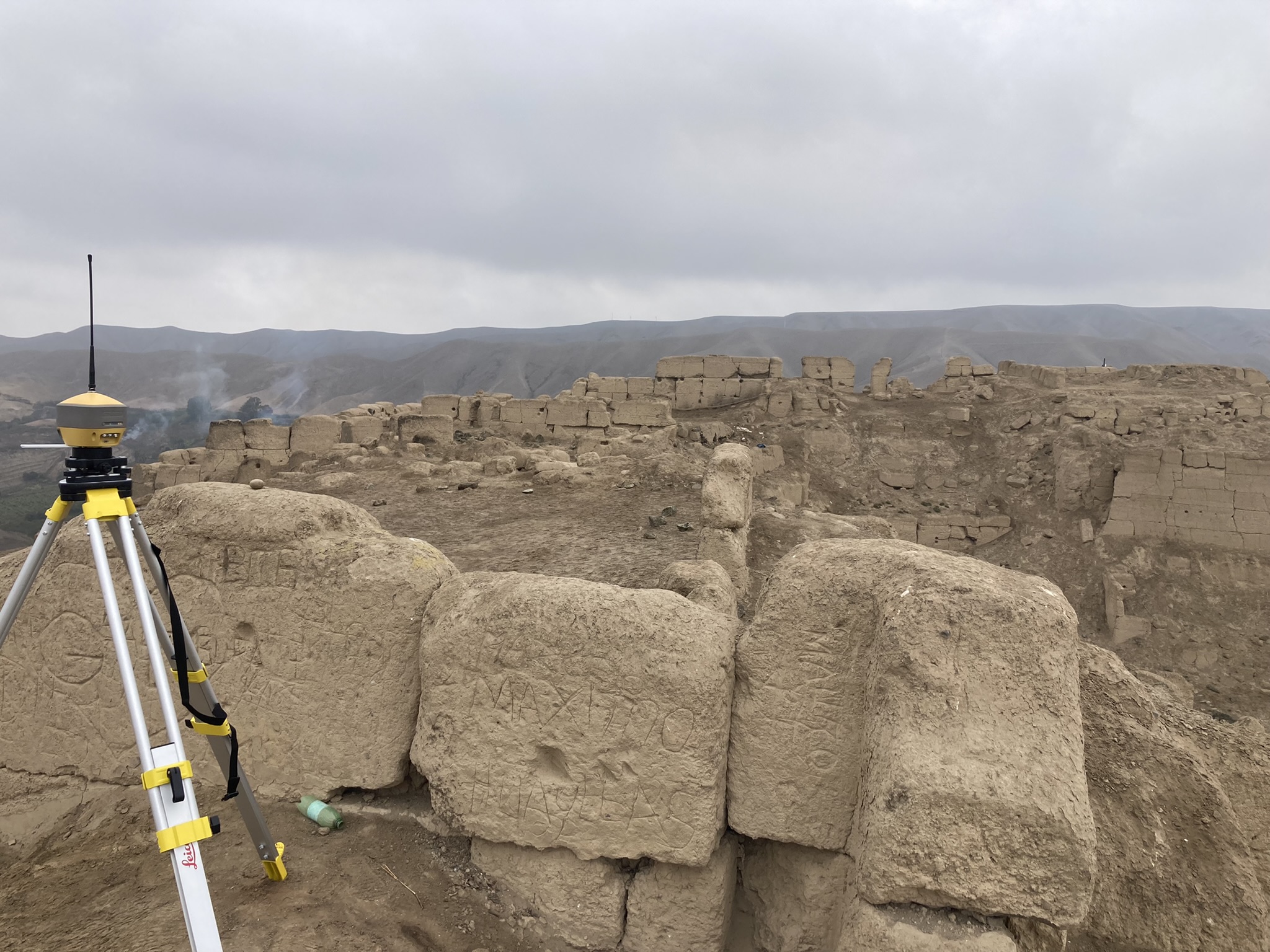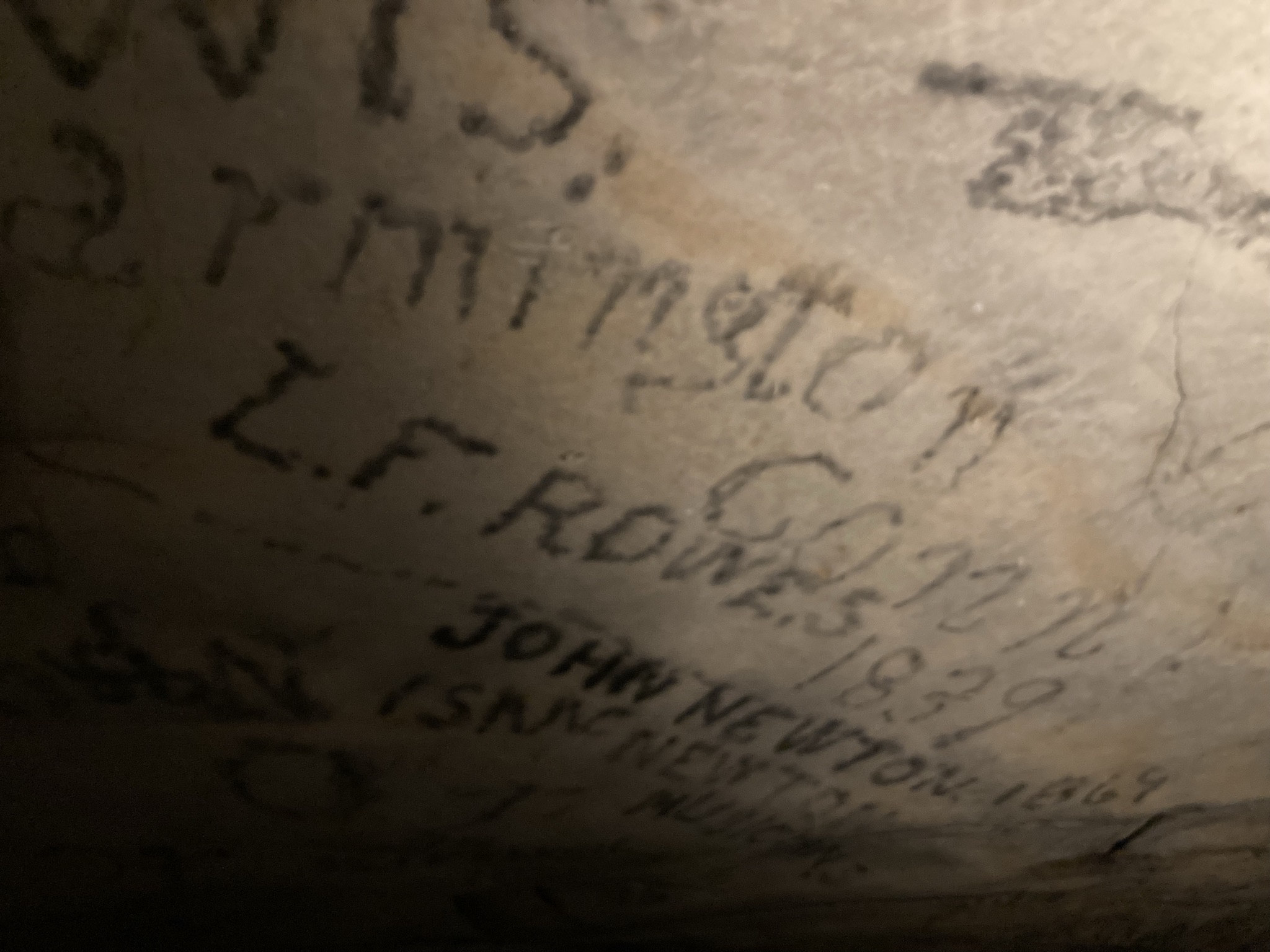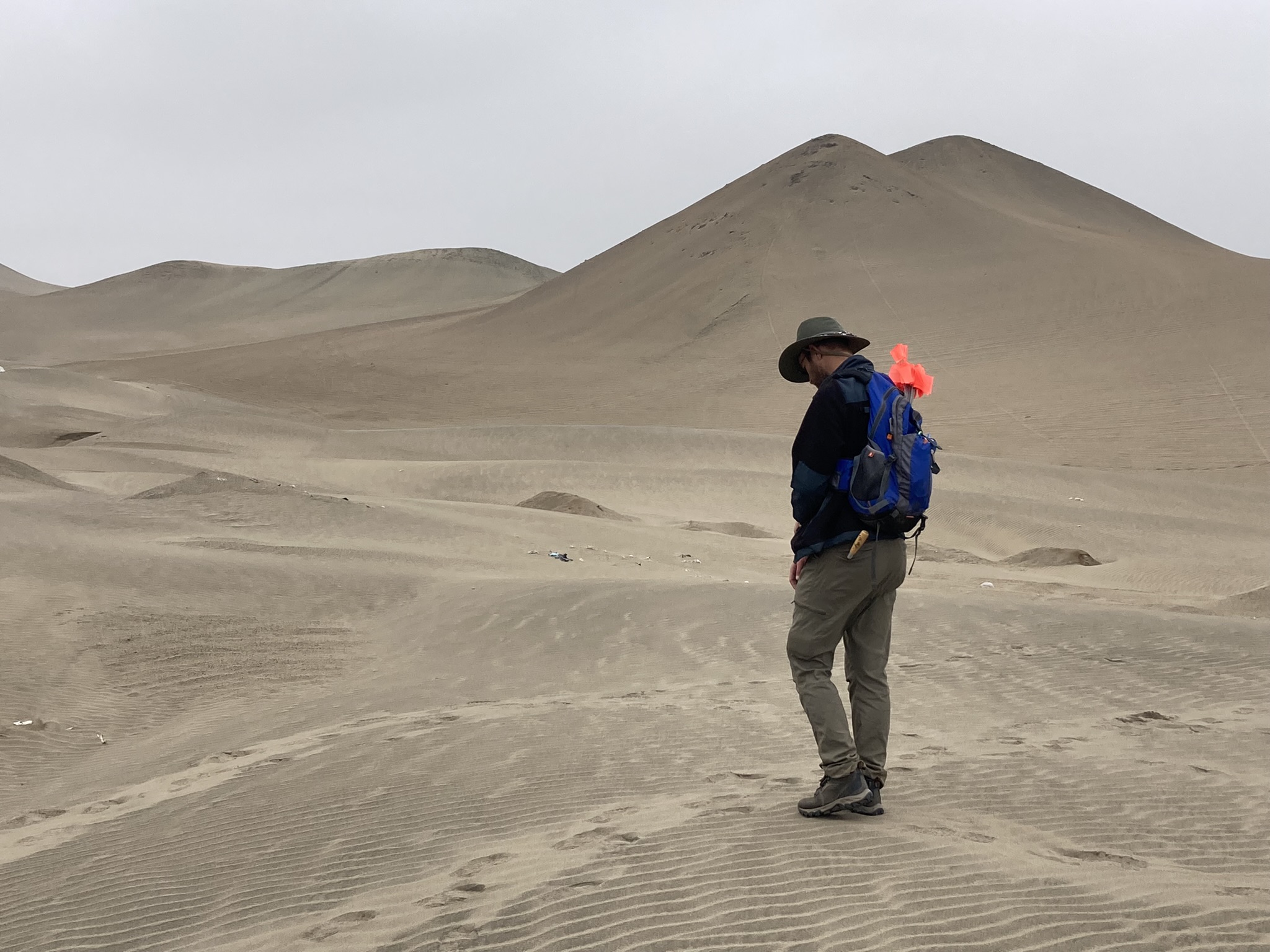The Intersection of Archaeology and the Trail
Ed. note: We are hikers, not lawyers. The information, including but not limited to text, graphics, images, and other material, contained on this website is for informational purposes only. No material on this site is intended to be a substitute for professional legal advice.
Imagine walking along a beautiful green trail. Wildflowers sprinkle the grass, the birds are singing, the bugs are buzzing, and you’re marching along on this beautiful day. Soon you enter a clearing, a nice flat area that sprawls before you with a small creek running through it. You follow the trail, and while you’re looking down, you see something that catches your eye. It looks like some kind of rock sticking out of the earth. You pick it up and recognize it as an arrowhead. You look around some more, but can’t find anything else, so you pocket your find and keep on hiking.
Hi! My name is Alejandra, and I’m an archaeologist. This year I will be attempting to hike the Appalachian Trail from Georgia to Maine. While preparing for this hike, I’ve read several books, multiple of which mention artifact hunting along the AT. As an archaeologist, I believe this is unethical and a topic that requires further attention. In this article, I hope to discuss the previous scenario and why it is important to protect the archaeology around us. But first, let me give you a little introduction to what archaeology is and what I do.
So you’re like Indiana Jones, right?
If you know any archaeologists, they might tell you that they are very much not a fan of Indiana Jones. In my opinion, I think the movies are fun and adventurous. However, they do not depict archaeology for what it really is (although I think it would be cool to wander around my digs with a cool hat and a whip). Anywho, let’s start with me:
I graduated from Purdue University in 2021 with a Bachelor’s degree in Anthropology (study of human culture) with a focus in Bioarchaeology (study of human bones). Since then, I have been working in the area of Cultural Resource Management (CRM) as an Archaeological Field Technician for almost two years. CRM archaeology is different from academic archaeology in the sense that one is not working for a university and performing research on a singular topic or area. Instead, one works for clients to assess cultural assets (e.g., whether building a new bridge will destroy an important archaeological site or not). After I complete the Appalachian Trail, my plan so far is to apply to graduate schools in the realm of archaeology (or maybe the trail will have other plans for me).

Me at one of my very first digs in Africa. The soil was so silty that our excavations often had wall collapses, hence the bare feet to avoid furthering this issue with my clunky hiking boots.
When I’m not covered in dirt and digging up something really old, I’m probably covered in sweat and hiking (although, let’s be real, I’m also covered in dirt here). Throughout my college years and after, I have performed archaeology in many places ranging from Wyoming and Florida to South Africa, Malawi, and Peru. However, I don’t claim to be all-knowing, and many of the opinions in this article will be my own unless otherwise stated.
If you can’t tell, I’m a fanatic about the outdoors and also interested in the human past. I love learning about past cultures and how different groups of people engaged with the environment around them. I’m also concerned about protecting our cultural resources. As an archaeologist, I believe that by studying the human past, we can learn so much about who we are today, and I think that’s fascinating. However, the only way that archaeologists can study the human past is by looking at what people left behind. If archaeological sites are disturbed, it makes it much harder to preserve our heritage as humans. For this reason, in the following sections, I want to highlight the legality of disturbing archaeological resources and how you can help protect them.
If archaeology isn’t running away from your archnemesis and recovering valuable artifacts, then what is it?
While trying to fend off certain doom would be really badass, the only thing I have ever fought off in the field was an angry swarm of yellow jackets (and let’s just say I lost). Archaeology can be defined in the simplest of terms as the study of the human past through material culture. Basically, through excavating, performing surface surveys, and doing analyses, we can decipher little by little what a past culture may have looked like. The key thing to note here is that not all archaeology is below the surface, although a lot of it is. For example, the pyramids of the Maya in Central and South America are above-surface features that are part of the archaeology. Additionally, due to erosion, you may find artifacts such as arrowheads in a creek bed or next to a trail.
While archaeology seeks to learn more about the past, it also wishes to protect it. Looting, or stealing, has been the archenemy of archaeologists for centuries. However, archaeologists haven’t always been the most ethical either. Early archaeology often involved hunting for artifacts and removing them from their original context and cultures. While this is still a hot topic today, I’m here to discuss looting in the context of the backcountry.
ARPA, It’s the Law
Let’s return to the scenario mentioned earlier. Oftentimes when we go into the outdoors, we find things that are new to us and that we think are really cool. I know when I was a kid, I loved to pick up shiny rocks and collect them. As humans, we are naturally curious and want to check things out. However, when it comes to archaeological resources, it is important to not touch them and leave them as they are. The following paragraphs will get a bit technical with legal lingo, but it will probably be one of the most important sections you read in this article. I will try to keep it brief, but please continue reading to increase your awareness of archaeology and the law.
In 1979, the Archeological Resources Protection Act (ARPA) was signed into place. This law was an improvement upon a previous act and allowed for better definitions of what archaeological resources are and what violations can receive penalties. According to Section 3 of ARPA, archaeological resources are material remnants of the lives of past humans, which are of archaeological significance. Some examples include pottery, glass bottles, stone tools (arrowheads, etc.), stone walls, and many more. The key thing here is that they are items that are 100 years old or more.
If these archaeological resources are violated by a person, they may receive a penalty under the law. Violations are listed in Section 6 and include such acts as digging, vandalizing, removing, selling, and even purchasing archaeological resources. There are other actions that also fall under ARPA, but for brevity’s sake, I will list resources at the end if you want further information. Penalties under ARPA vary on how much damage was done and if it is a repeated offense. ARPA fines can range between $10,000 and $100,000 and could include imprisonment—aka some serious stuff.

Heavy vandalism present at a site in Peru. Please refrain from scratching your name onto archaeological sites (and trees).
Something important to note about ARPA is that it protects resources that are present on public lands. Section 4 describes these as such places possessed and managed by the United States. Some examples are National Parks and National Forests. Lands that are private or belong to a state fall under different regulations. In regard to private property, it is legal to collect artifacts as long as you have written consent from the landowner, but also check your state’s laws on this as they may differ. State lands may require a permit to collect artifacts or use metal detectors, so make sure you check your state’s laws here as well.
Looting and heritage loss
My greatest experience with looting in the United States has been on public land in Wyoming. The reason I know there has been plentiful looting in the Wyoming backcountry is that you often find what is called a looter’s pile. This is a collection of discarded artifacts that a looter will leave behind because they are not as valuable as other artifacts and are therefore not worth selling. I’ve seen these along trails on top of rocks or as little piles in the grass. In the American Southwest, graffiti and carvings have been found on rock art. I also heard a story in one of my classes about a man who had kept a Native American skull in his house. This poses even greater problems as it falls under NAGPRA (the Native American Graves Protection and Repatriation Act), which is a whole other rabbit hole.

Here is an example of vandalization in Mammoth Cave National Park. However, because of the age of this specific graffiti, the line between vandalism and historic site is blurred.
Looting and any other form of violation of ARPA lead to heritage loss. By removing artifacts from their original context in an archaeological site, we lose key information about where humans came from, how they evolved, and what their culture was like. The archeological record tells the story of all of us and is, therefore, incredibly worth protecting.
Leave No Trace and What To Do if You Encounter Archaeological Resources and Looting
A large number of archaeological sites are present in public lands as they are largely protected and untouched. Therefore, it is not unheard of to find new sites while out in the backcountry. Greater use of trails and the outdoors, in general, can lead to more and more sites being discovered. A fellow archaeologist was camping out in Utah at an established campsite and noticed remains of stone tool production by some long-ago group of people. What did he do with this information? Let’s talk about it.
According to Leave No Trace (LNT) Principles, you must leave what you find and not alter the areas around you. This includes any archaeological resources and sites. If you see an artifact, don’t touch it and leave it where you found it. If you encounter an old adobe structure, do not climb or enter. Often when we think about Leave No Trace, we think about not leaving trash in the outdoors or respecting wildlife; however, it is much greater than that.
What do you do if you find an artifact or other piece of the archaeological record?
To answer this question, I asked my fellow archaeologist colleagues what their recommendations were. Mainly, if you find something, follow LNT Principles and leave it as it is. Feel free to take notes on the artifact, take pictures, or sketch it! You just made a really cool discovery! Try not to pick the artifact up, as it could potentially fall apart. If you do happen to pick it up, all of us archaeologists would appreciate it if you put it back in as close of a position as you found it (really helps us with context information). If you have a GPS or other way of noting your location, please do so.
To help preserve the archaeological record, you can also report your findings. If on federal land such as a National Park, you can report it to the National Park Service. If not, you can report it to the State Historic Preservation Office (SHPO) of the state in which you encountered the item. Additionally, if on land belonging to a Native American group, you can report it to a Tribal Historic Preservation Office (THPO).
What do you do if you encounter someone actively looting or defacing a site?
In this scenario, I recommend not engaging with these individuals as they are potentially dangerous. If you are in a safe position to do so, take pictures of the individuals and any equipment or vehicles (especially license plates) or take notes as best you can. If it is not safe to do so, leave the area as swiftly and as safely as possible. Afterward, you can report these actions to law enforcement (whether that be National Park Service Law Enforcement or another law enforcement group).
In summary…
The next time you’re out in a National Forest/Park, State Park, or any backcountry area, follow LNT principles and leave everything as you find it. Don’t take anything that might be an artifact, and don’t climb or vandalize structures. If you can, report what you find.
It is incredibly important to protect our archaeological resources as they have the potential to reveal more about our past. By protecting these, we are also able to create space for learning and preservation. If you want to learn more about the laws and ethics behind this article, I have provided some links below to some useful articles. Have any questions? I can’t promise I will be able to answer them, but I will try my best to point you in a helpful direction.

Protect the archaeological resources around you; they are heritage to us all (featuring Macchu Picchu, a UNESCO World Heritage Site).
Resources
Videos on ARPA by the Bureau of Land Management:
Short article on the laws and ethics of archaeology in the US by the Society for American Archaeology:
Short article by the National Park Service on looting and vandalism:
Pamphlet by the National Park Service on what to do if you find an artifact:
A guide to the Leave No Trace Principles:
This website contains affiliate links, which means The Trek may receive a percentage of any product or service you purchase using the links in the articles or advertisements. The buyer pays the same price as they would otherwise, and your purchase helps to support The Trek's ongoing goal to serve you quality backpacking advice and information. Thanks for your support!
To learn more, please visit the About This Site page.

 ">
">





Comments 2
As a fellow archaeologist and 2019 AT thruhiker this article is excellent! Thanks so much for being a voice for both the archaeological and hiking community. I hope you have a wonderful hike. Happy trails.
Sorry to be nitpicky, I just worked at Mammoth cave and wanted to let you know the Gothic Avenue section with the graffiti has recently been recommended as contributing to the mammoth cave historic district NRHP listing as part of history of 19th ce cave tourism and exploration. It would have been very recent like 2021. I think it’s a solid example of vandalism but the NPS has made the relationship complicated. Also Mammoth Cave National Park is amazing everyone should go visit.
Hello! Thank you for the great feedback! I visited the park a few years back and loved it! It’s one of my favorites. I shall add additional information in the caption to reflect your comments. Thank you again!